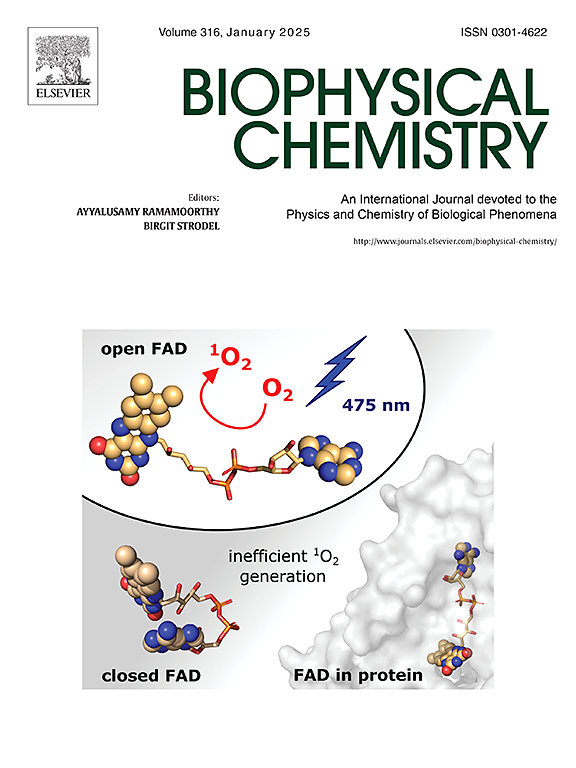Identification and structural characterization of CB1 receptor antagonists: A comprehensive virtual screening and molecular dynamics study of arachidin-2
IF 2.2
3区 生物学
Q2 BIOCHEMISTRY & MOLECULAR BIOLOGY
引用次数: 0
Abstract
The cannabinoid receptor 1 (CB1) is an essential component of the endocannabinoid system, responsible for regulating various physiological processes such as pain, mood, and appetite. Despite increasing interest in the therapeutic potential of CB1 modulators, the precise mechanisms by which small molecules modulate receptor activity—particularly without fully transitioning between active and inactive states—remain partially understood. In this study, the complexity of CB1–ligand interactions was evaluated for the inactive CB1 state. A comprehensive pipeline, integrating ligand-based similarity search, 2D fingerprint-based reverse virtual screening and molecular dynamics (MD) simulations, identified compounds with core scaffolds commonly found in bioactive natural products, such as stilbenoids and polyphenolic compounds. Arachidin-2 (AR2) and a polyphenolic derivative were subjected to extended MD simulations, revealing their ability to stabilize the inactive CB1 state across key helices. The distinct stability differences observed in the helices HI, HIV, and HVI of the active CB1 state further highlighted ligand-specific conformational dynamics. A comparative analysis with co-crystallized synthetic ligands AM6538 and AM841 demonstrated the distinct binding behaviors of natural and synthetic ligands. AR2 showed more favorable binding to the inactive form (−22.0 kcal/mol) than to the active state. Similarly, the polyphenolic compound exhibited a greater binding difference (∼6 kcal/mol) between the inactive and active states. Notably, AM6538 and AM841 demonstrated the strongest binding (∼30 kcal/mol) to the inactive and active state, respectively. Key residues stabilizing the identified compounds in CB1-inactive state included PHE102, GLY166, PHE170, VAL196, LEU359, SER383, and CIS386. These findings underscore the utility of computational methods in the discovery and development of novel CB1 modulators for potential biomedical applications.

CB1受体拮抗剂的鉴定和结构表征:花生四烯素-2的综合虚拟筛选和分子动力学研究。
大麻素受体1 (CB1)是内源性大麻素系统的重要组成部分,负责调节各种生理过程,如疼痛、情绪和食欲。尽管人们对CB1调节剂的治疗潜力越来越感兴趣,但小分子调节受体活性的确切机制——特别是在活性和非活性状态之间没有完全转换的情况下——仍然部分被理解。在这项研究中,CB1-配体相互作用的复杂性被评估为非活性CB1状态。一个综合了基于配体的相似性搜索、基于2D指纹的反向虚拟筛选和分子动力学(MD)模拟的综合管道,鉴定了在生物活性天然产物中常见的具有核心支架的化合物,如苯乙烯类化合物和多酚类化合物。Arachidin-2 (AR2)及其多酚衍生物进行了扩展的MD模拟,揭示了它们在关键螺旋上稳定非活性CB1状态的能力。在活性CB1状态的螺旋HI, HIV和HVI中观察到的明显稳定性差异进一步突出了配体特异性构象动力学。与共晶合成配体AM6538和AM841的对比分析表明,天然配体和合成配体的结合行为截然不同。AR2与非活性形态(-22.0 kcal/mol)的结合比与活性形态的结合更有利。同样,多酚类化合物在非活性态和活性态之间表现出更大的结合差异(~ 6 kcal/mol)。值得注意的是,AM6538和AM841分别表现出最强的非活性态和活性态结合(~ 30 kcal/mol)。将鉴定的化合物稳定在cb1无活性状态的关键残基包括PHE102、GLY166、PHE170、VAL196、LEU359、SER383和CIS386。这些发现强调了计算方法在潜在生物医学应用的新型CB1调节剂的发现和开发中的效用。
本文章由计算机程序翻译,如有差异,请以英文原文为准。
求助全文
约1分钟内获得全文
求助全文
来源期刊

Biophysical chemistry
生物-生化与分子生物学
CiteScore
6.10
自引率
10.50%
发文量
121
审稿时长
20 days
期刊介绍:
Biophysical Chemistry publishes original work and reviews in the areas of chemistry and physics directly impacting biological phenomena. Quantitative analysis of the properties of biological macromolecules, biologically active molecules, macromolecular assemblies and cell components in terms of kinetics, thermodynamics, spatio-temporal organization, NMR and X-ray structural biology, as well as single-molecule detection represent a major focus of the journal. Theoretical and computational treatments of biomacromolecular systems, macromolecular interactions, regulatory control and systems biology are also of interest to the journal.
 求助内容:
求助内容: 应助结果提醒方式:
应助结果提醒方式:


